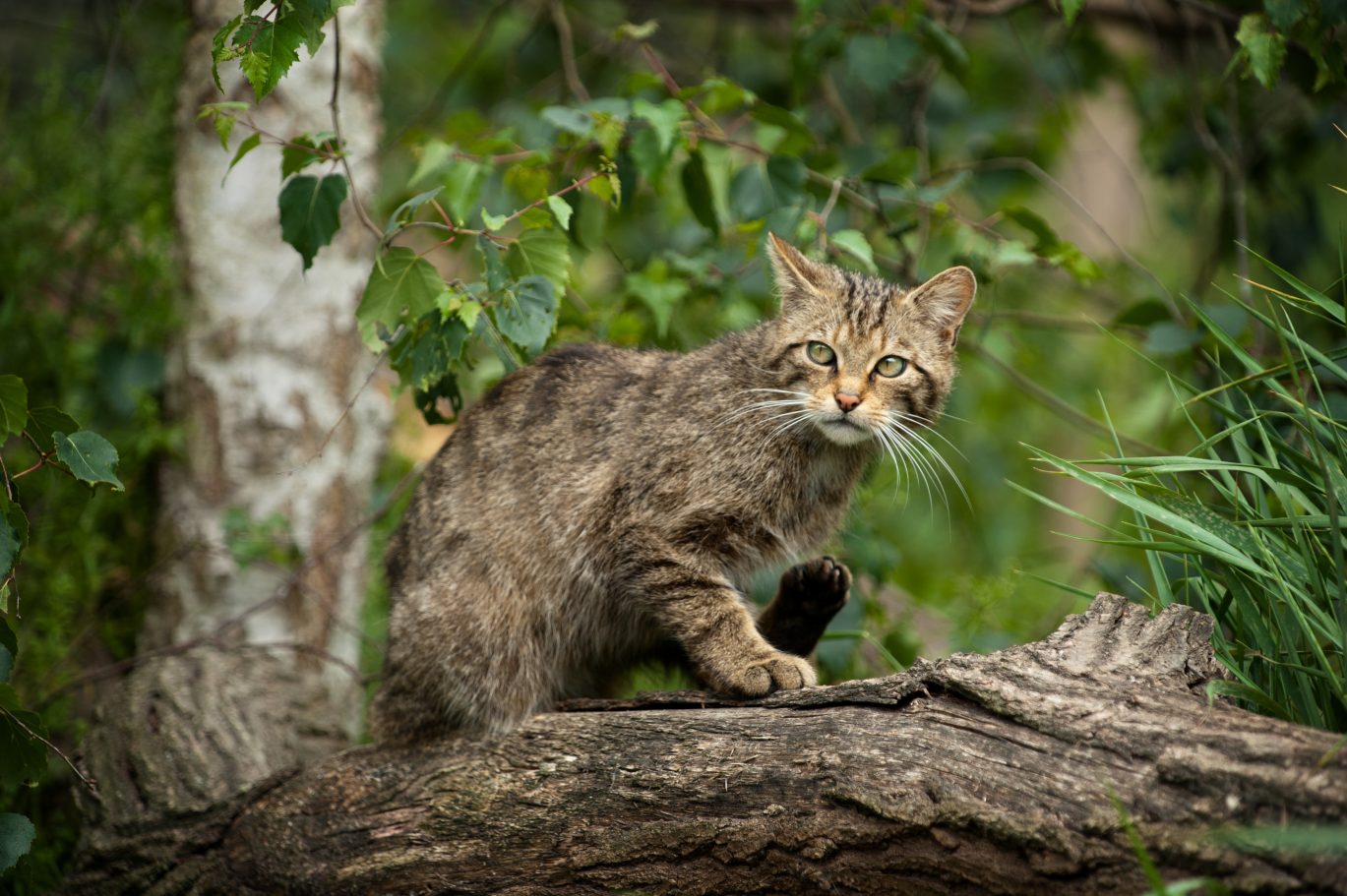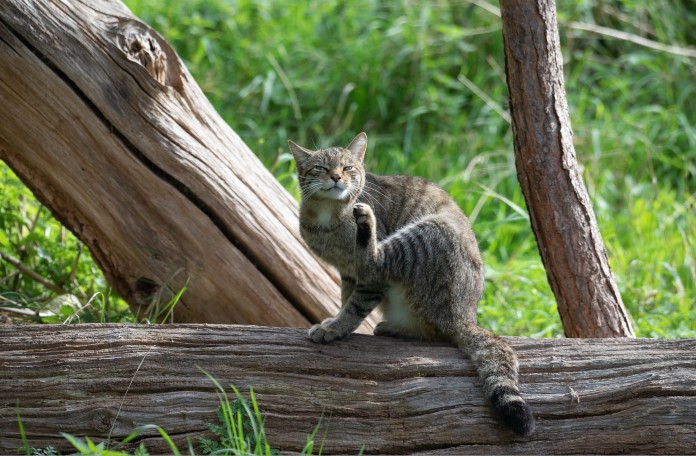
Scottish Wildcat
Everything we know about the fearless feline of the Scottish Highlands.
The elusive, untameable Scottish Wildcat is the country’s most threatened mammal. With their numbers dwindling, they’re rare to see and highly endangered. They’re the enigma of the Scottish wilderness and this has earned them the title – The Highland Tiger.
What are Scottish Wildcats?
The Scottish Wildcat is the only native member of the cat family that can be found in Scotland’s wilderness. Due to their elusively and falling numbers, it’s difficult to get an accurate estimate of their population – it’s thought to be around 100.
Scottish Wildcats are a European Protected species and used to be found throughout mainland Britain. After WW1 their range declined due to persecution and overhunting and now their current range spans areas across mainland Scotland, north of the Highland Boundary Fault.
What do Scottish Wildcats look like?
The Scottish Wildcat is the only native member of the cat family that can be found in Scotland’s wilderness. Due to their elusively and falling numbers, it’s difficult to get an accurate estimate of their population – it’s thought to be around 100.
Scottish Wildcats are a European Protected species and used to be found throughout mainland Britain. After WW1 their range declined due to persecution and overhunting and now their current range spans areas across mainland Scotland, north of the Highland Boundary Fault.

Scottish Wildcat size vs domestic cat
Scottish Wildcats are stockier and more muscular than a domestic cat. They also have longer legs and a larger, flatter head. Their pointy ears stick out to the side and their fut markings can help identify them as pure bred. They don’t have white feet or stomachs like tabby cats and don’t have a line down their tail either.
Scottish Wildcat diet
These feisty felines are carnivores, meaning their primary source of food is meat. They feast on small mammals like rabbits and rodents such as rats and voles. They’ve also been known to eat mice, reptiles, birds, fish and frogs.
They’re skilled, stealthy hunters with exceptional sight, hearing and sense of smell. They also have particularly sensitive whiskers. They’re patient creatures who stalk their prey and pounce when the moment’s right.
As hunters, they’re mainly crepuscular – meaning they’re active at dusk and dawn. However, if their territory is undisturbed, they may venture out to hunt during the day. Their utter power and velocity enables them to successfully hunt larger animals such as hares. They’re incredibly strong and agile animals, able to spring off their hind legs to catch birds.
The presence of a wildcat is important for the plant life of its habitat as they keep populations of herbivores at sustainable levels, allowing plant life to thrive.
Scottish Wildcat habitat
Scottish Wildcats are now only found in the Scottish Highlands with the last known official record of them in England in the mid-1800s. They don’t usually live higher than 650 metres above sea level as they prefer to stay in areas of cover, such as woodland.
They prefer to live in widespread tree coverage and there’s few places remaining in Britain that have the level of woodland that they need. They’re also known to live along the edges of woodland, farmland and moorland where there’s desirable cover.
They avoid being out in heavy rain or snow and need a wooded territory that spans a few hundred hectares in size. Included in this territory must be open pasture in order for them to hunt efficiently. The size of this space varies depending on their gender and the availability of prey in the area. Same-gender territories rarely overlap with each other, but male territories often overlap with female ones as the males’ spaces are generally larger.
Breeding habits
Scottish Wildcats are solitary animals except during breeding season which takes place from January until March. This is where the males seek out females to mate with. The mating process is the only few days of the year where the genders interact.
Both genders mark out their territories to announce their presence. This includes scent markings such as spraying, spreading faeces and clawing or rubbing their face against tree trunks and fenceposts.
A Scottish Wildcat’s gestational period spans 2.5 months, and they give birth to a litter of between 1 and 8 kittens. The mothers then care for the kittens until they reach independence at 6 months old and leave to establish their own territories.
Threats to Wildcats
Due to hunting and habitat loss, the Wildcat disappeared from England and Wales around 200 years ago. As well as the lack of suitable woodland habitats, hybridisation is the greatest threat to this iconic, elusive animal. Breeding with feral domestic cats dilutes their genes and means that this species’ features could be lost. This also makes the identification of pure Scottish Wildcats and their protection even more difficult.
Other threats include road deaths, accidental killings in traps, and disease spread by feral domestic cats.
Scottish Wildcats are now classed as critically endangered by the International Union for Conservation of Nature (IUCN).
Protection of Scottish Wildcats
This species is protected under Scots and European law, making it an offense to deliberately or recklessly capture, kill, harass or injure them. It’s also an offense to damage or destroy their resting place or breeding site and to sell, transport or exchange a Scottish Wildcat.
There is hope for these mighty Scottish mammals however, as in 2023 the Saving Wildcats project bred 19 Scottish Wildcats from the purest native stock available. They were then released into the wild in the Cairngorms National Park. In 2024 a further 9 were released and as a result of camera and GPS tracking, the project found that some of the released cats had given birth to kittens in summer 2024.

Puppies across Scotland need your help
Please consider giving a monthly donation today. Give Scotland’s animals the gift of safety this winter and beyond. The criminals involved in the low-welfare puppy trade never stop. And with your help, neither will we. Every £1 matters to puppies like Winnie.